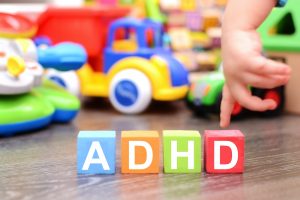 Preschool-age kids are often described as hyperactive, easily distracted, and impulsive — which just so happen to be the exact traits of Attention Deficit Hyperactivity Disorder (ADHD). Because these typical behaviors are so similar to the signs of ADHD, it can be difficult to catch in young children. While detecting ADHD in preschoolers isn’t easy, some early red flags can help parents and caregivers decide if a professional evaluation is necessary.
Preschool-age kids are often described as hyperactive, easily distracted, and impulsive — which just so happen to be the exact traits of Attention Deficit Hyperactivity Disorder (ADHD). Because these typical behaviors are so similar to the signs of ADHD, it can be difficult to catch in young children. While detecting ADHD in preschoolers isn’t easy, some early red flags can help parents and caregivers decide if a professional evaluation is necessary.
Highlights:
|
What is ADHD?
ADHD stands for Attention Deficit Hyperactivity Disorder. ADHD is a psychiatric disorder, which may seem scary! But all that means is that it is classified as a condition involving mental functioning that impairs a person’s ability to pay attention and control their behavior. Symptoms of ADHD include:
- Hyperactivity
- Fidgeting
- Inattention
- Poor organizational skills
- Easily distracted
Because all of these behaviors can make it more challenging for a child to thrive in a school setting, ADHD can also lead to frustration, a heightened temper, irritability, and moodiness.
How to Detect ADHD in Early Childhood
As stated above, detecting ADHD in young children can be difficult. However, with some careful examination, you can decide if it’s best for your child to be evaluated. Children as young as 4 can be diagnosed with ADHD, and as they mature in a school setting, signs will become more evident.
If your child is in school, talking with their teachers is a great place to start. How they behave in the classroom can shed light on the situation. Because classrooms have more structure than homes or playgrounds, early signs of ADHD are easier to detect in school-age children. We know it’s not always fun to compare your child to other kids, but it’s important to know if certain behaviors stand out. Ask teachers if your child is more inattentive, hyperactive, and impulsive than the average student.
The American Academy of Pediatrics (AAP) recommends assessing a child’s behavior in an environment other than their home for a proper diagnosis. So if your child is not in school, you can observe them while they’re engaged in structured activities, such as sports or group projects with peers, and speak with other adult caretakers about their behavior.
Signs of ADHD in Young Children
Signs and symptoms of ADHD can be broken down into characteristics of hyperactivity and inattention. Some signs that point to hyperactivity include:
- Constant fidgeting
- Trouble staying seated
- Excessive talking
- Not waiting their turn to talk or do an activity
- Often interrupting conversations
- Trouble with quiet time
- Often invades peer’s personal space
Signs that point to inattention include:
- Difficulty following directions
- Trouble focusing on tasks or structured activities
- Trouble staying organized
- Easily distracted
- Loses personal items often, such as backpacks, lunch boxes, or school supplies
- Trouble remembering
If you believe your child is showcasing many of these signs, it’s highly recommended to reach out to your healthcare provider or a pediatric psychiatrist for an evaluation. Mark L. Wolraich, MD, FAAP, a clinician and researcher in ADHD, says, “while we know ADHD can be challenging and frustrating for families, children who are identified early and receive proper treatment can learn to manage their symptoms and be successful.”
When it comes to an ADHD diagnosis, you may be tempted to take the “wait and see if they grow out of it” approach. However, if your child’s symptoms seem severe, remember that early intervention and treatment can make a huge difference in their lives.
Back







